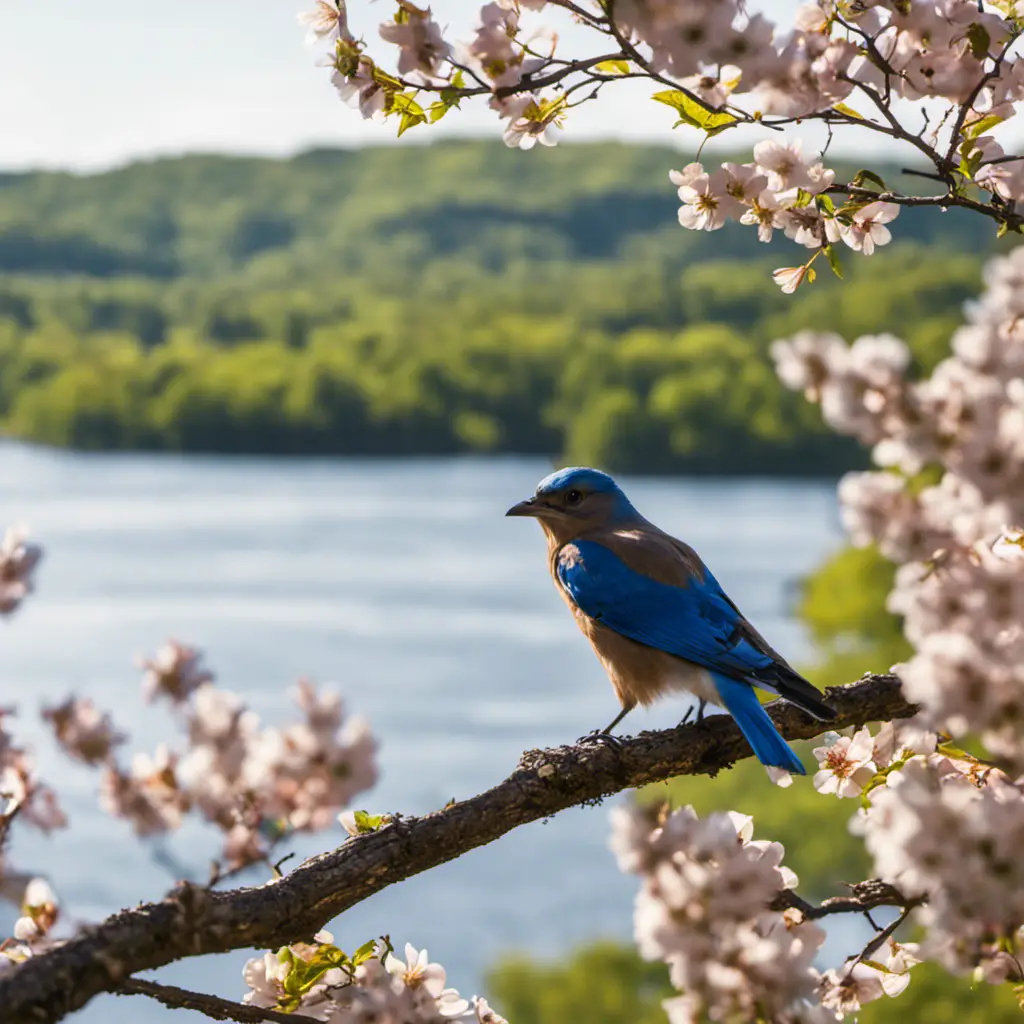Did you know that Nevada is home to more than 200 different species of birds? That’s a lot of feathers! In this blog post, we will discuss some of the most common birds found in the state. Whether you’re a bird enthusiast or just looking to learn a little bit more about our feathered friends, this post is for you!
Backyard Birds in Nevada
White-crowned Sparrow
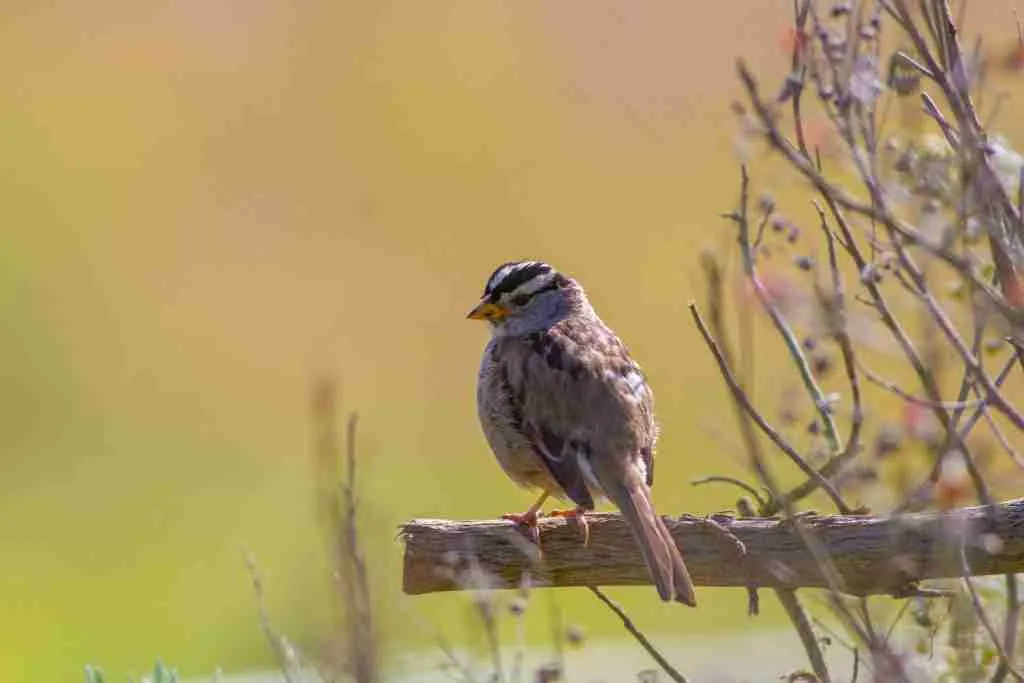
With a wingspan of 6 inches and white stripes above their eyes, White-crowned Sparrows are distinguishable for their gray brown backs, grayish breast, pink bill with a dark tip. Their diet is mostly composed of sunflower seeds in the wintertime and insects during summer as they prepare to breed.
White-crowned Sparrows inhabit the northern stretches of Canada and western US, settling in open woodlands or forests to build their nests from grasses, feathers and hair.
During the daylight hours these sociable birds forage on ground level for nourishment before reuniting with one another at nightfall – roosting among trees or thickets. These sparrows are particularly fond of flock life; regularly gathering other species such as finches and juncos into stimulating mixed groups that soar through the skies together.
If you’re seeking to spot White-crowned Sparrows, the winter months are your best bet. Search around open areas near human settlements such as your backyard or a nearby park for maximum success.

Dark-eyed Junco
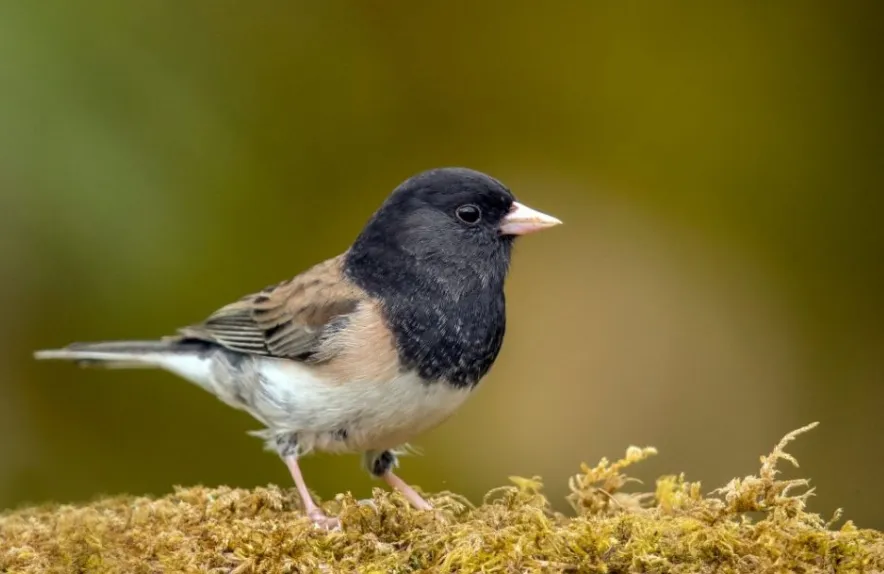
Junco hyemalis, sometimes referred to as small sparrows due to their appearance, are easily recognizable with dark gray or black upperparts and white underparts. Males tend to have a darker head than females while they both feature identifiable pinkish-brown legs and short notched tail feathers. Nevada is home to these feathered friends which prefer open woodlands, brushy areas, mountain meadows; eating mostly insects and seeds. During winter months Juncos can be seen in flocks gathering in open fields or along roadsides singing the delightful simple trill we all know them for!
The bottom half of these birds are a pristine white and can often be spotted in open woodlands, brushy places, mountain meadows as well as open fields and roadsides during winter months. As for sustenance, they predominantly feast on insects and seeds. When congregating in the cold weather season their song is simply delightful – a mellow trill emanates into the air! These birds have become an integral part of Nevada’s landscape with sightings all across the state.

Lesser Goldfinch
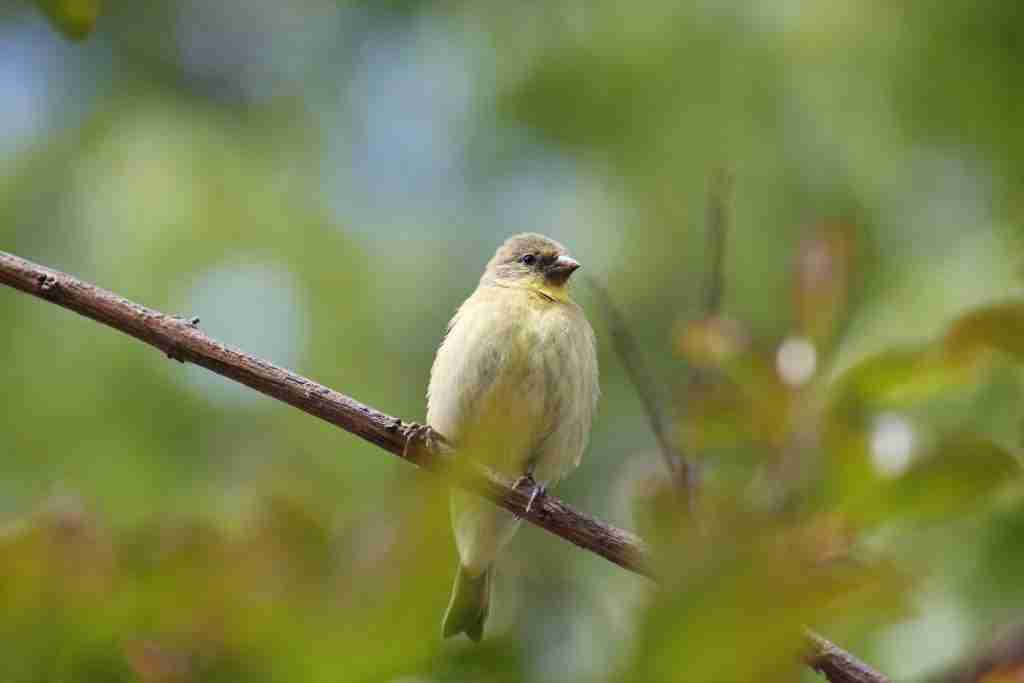
Small in size, the Lesser Goldfinch possesses a black body and brilliant bright yellow wings. Males have glossy black caps, while females don vibrant brown ones. Seeds and insects form their primary diet, which they find in open spaces such as meadows, fields, or forests. Active birds by nature; these flocking friends are known to mimic other bird sounds with great accuracy – making them an entertaining addition to any outdoor symphony!
The diet of the Lesser Goldfinch is mainly comprised of seeds, but they will also seek out insects when necessary. They prefer open areas such as forests, meadows, and fields for their habitat while traveling in flocks with other birds to increase their chances of survival. As well known mimics, these peaceful animals are fairly docile although they may become territorial or combative if competing for food sources or nesting grounds.

Mourning Doves
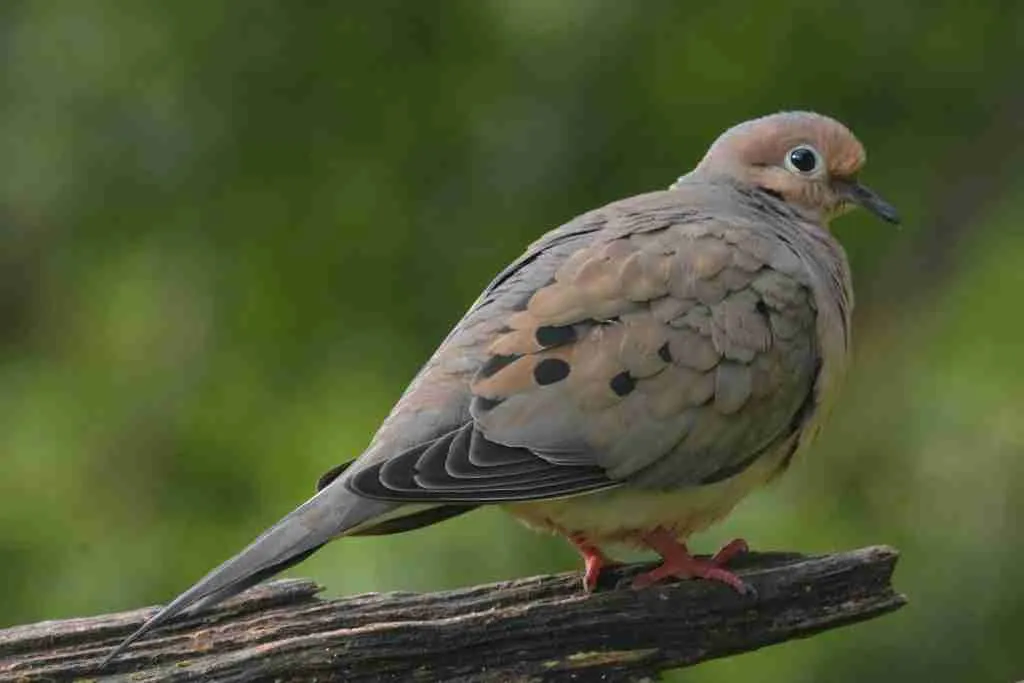
Named after the sorrowful mourning sound they make, Mourning Doves are a common sight across North America. Medium-sized and grey with white feathers, these birds have distinct black spots on their wings – followed by long tails that trail behind them as they take flight. While diets typically consist of various seeds, insects can also be found making an appearance from time to time! These shy creatures inhabit open areas such as fields or parks – although usually fly away when people come too close for comfort. Monogamous in nature; couples tend to stay together for life while raising two to six young at a given moment in time.
Mourning doves are widely admired in North America, as they can be found almost everywhere. From gardens to backyards – you will frequently spot these grey and white birds around your area. These little creatures measure up to 12 inches only from their heads to the tip of their tails! Their wings have black spots which come off more when in flight. Mourning doves dine mostly on seeds but also feed on insects occasionally too. They usually reside at open areas like fields, deserts or parks near you!

American Robin
(Turdus migratorius)
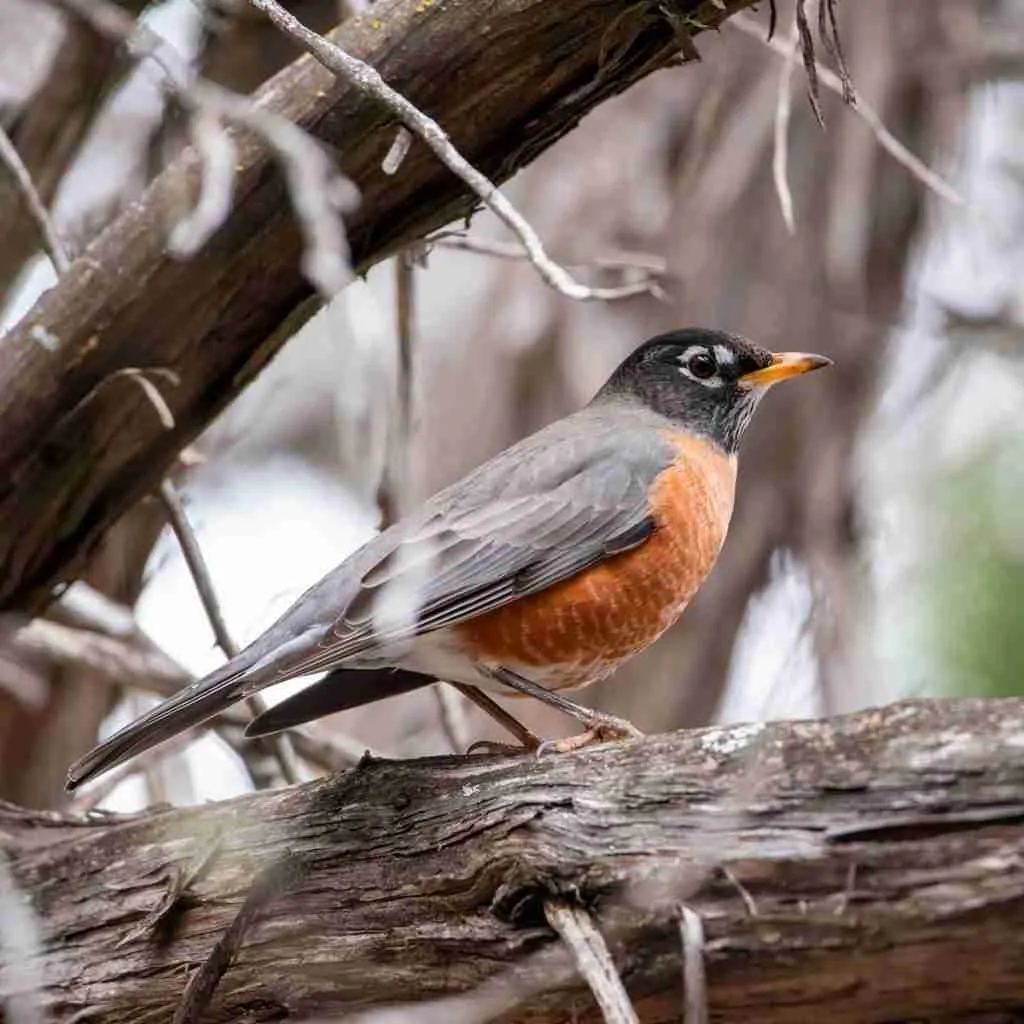
The American Robin is a delightful bird with a chestnut back, black head and tail, and vibrant orange breast. It measures around 16 to 20 cm (63⁄64 – 25⁄32 inches) long. This beautiful creature can be discovered in woodlands, gardens, parks, and open fields across North America. Robins feed on insects as well as fruits and berries for sustenance. Of special note—the American Robin proudly serves as the state bird of Connecticut, Michigan and Wisconsin!
The American Robin’s courtship season begins in April and May, which is when they choose a mate. Females construct cup-shaped homes from foliage, soil, and grass that are normally situated in trees. Every nest usually has between three to five eggs. It takes around two weeks for the chicks to hatch; then another couple of weeks until they leave the nest forever (fledge). Both mother and father feed their young until the babies can sustain themselves independently.
The American Robin is a beloved bird, renowned for its melodic chirps and presence near human dwellings. It’s often considered as an emblem of springtime since it returns from its winter range in the northern US and Canada before many other birds do. Bird or hummingbird feeders which are placed close to residential areas usually draw Robins; they enjoy consuming fruits, insects, and berries so make sure you fill your feeder!

Northern Flicker
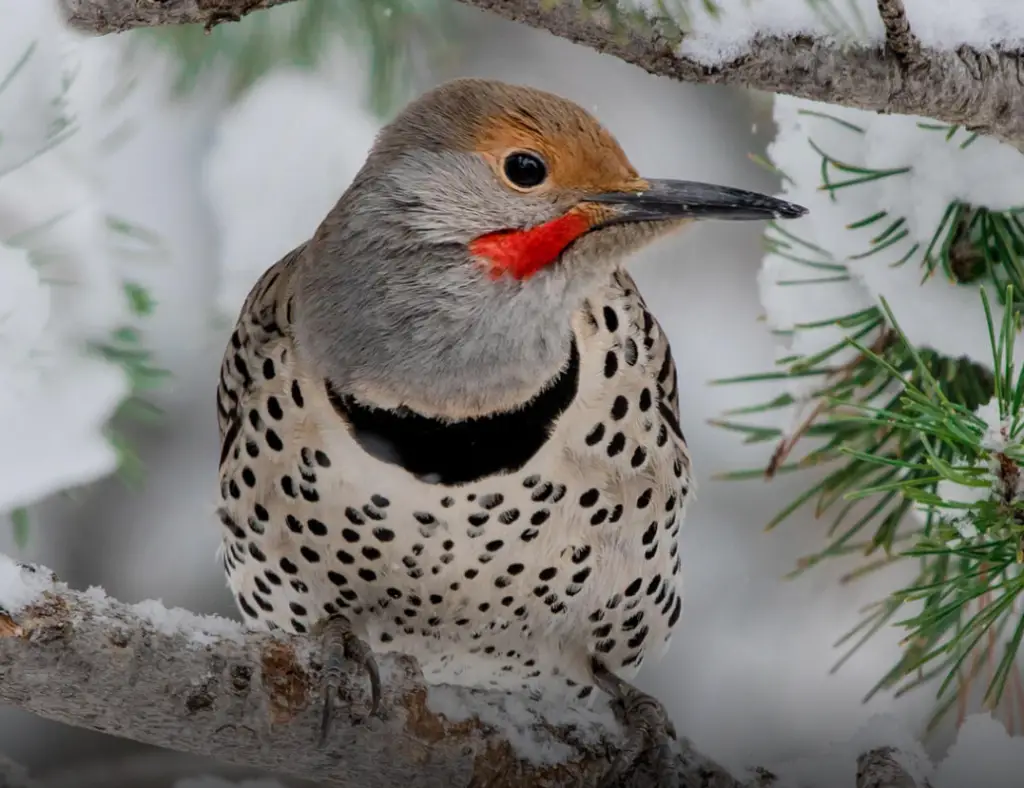
The Northern Flicker, a species of the woodpecker family and native to North America, inhabits places from Alaska down to Mexico. It is also a distinguished bird in three American states — Alabama, Arkansas and Nebraska where it was given the title as their state bird. The average size of this medium-sized creature spans between 12 -15 inches long with males sporting an eye-catching plumage of red on its breast while females are adored by golden yellow one instead.
They both have black bars running along their wings accompanied by white stripes that appear on its tail feathers too. In terms of sustenance, they feed upon insects, berries as well as seeds whilst building nests inside tree cavities filled with four -eight eggs per clutch each breeding season!
The Northern Flicker is a reclusive bird, rarely observed but often heard. Its signature sound akin to “wicka-wicka-wicka” can be detected when it’s in flight and its beak has been known to create an additional noise by drumming on objects around it.

Great-tailed Grackle

The Great-tailed Grackle is an impressive blackbird with a lengthy tail, featuring a glossy black body in the males and dark brown plumage for the females. Although they prefer open environments such as parks, meadows or pastures to search for their food (insects, seeds & fruits), these birds form large groups which can be pretty aggressive during nesting season – even attacking humans!
Great-tailed Grackles are a common sight in fields, pastures, and parks throughout America. They feed on various insects, fruits, and seeds that they find while scrounging along the ground. During breeding season these gregarious birds can be seen gathering in large flocks; however it’s important to note that during this time they can become quite aggressive towards other animals – even humans!
In North and South America Great-tailed Grackles have been spotted from Mexico all the way down through Honduras to Costa Rica and Panama. But perhaps their most popular nesting grounds is within our own United States – particularly the southwestern states where sightings of them abound year round!

Verdin

The unique Verdina is a small songbird with olive-green upperparts and yellow underparts that possess an eye-catching white crescent on their chest, plus an elegant black streak running from bill to neck. Found in open woodlands and scrublands of the western US, they feast upon insects and spiders. With average sizes around four inches long, they are truly petite birds!
With wingspans ranging from six to seven inches, Verdinas can be spotted in open woodlands across the west coast of America. Their preferred habitats are mainly sagebrush, chaparral, and pinyon-juniper forests where they will remain year-round since they don’t migrate. Additionally, these birds form committed partnerships with their mate for life!
Verdinas are fiercely protective of their domain and will battle any other bird that dares to encroach upon it. The male Verdina’s melodious song is used to entice a suitable mate, while the female Verdina builds the nest; this structure consists of twigs, grass, leaves and hair which is then lined with soft feathers and down.
After laying three to five eggs (which have pale blue shells speckled with brown), she remains seated atop them for 12 days until they hatch. It takes another 21 days before they learn how to fly from their home in the sky – these feathered friends can sometimes be seen around human dwellings as well if there are feeders placed near by! Fruits, berries and insects form part of their diet here in Nevada too.

House Sparrow
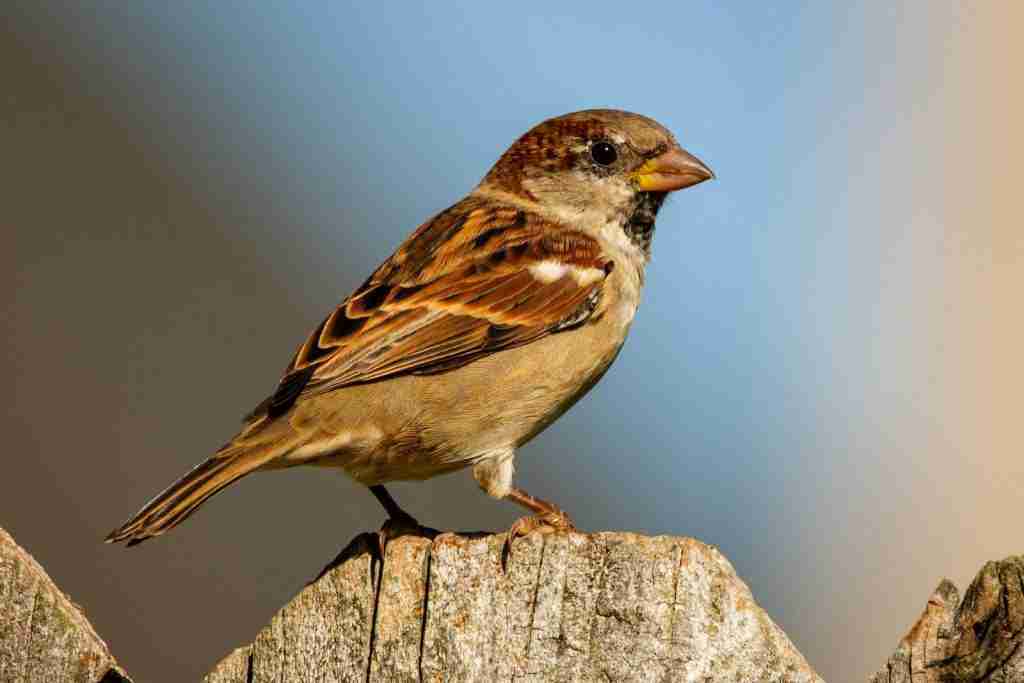
House Sparrows are small birds that have a unique combination of brown and gray feathers, complemented by a white belly and black head stripe. These little creatures measure approximately 6 inches in length. They experience an eclectic diet consisting mostly of seeds but will occasionally snack on some insects as well! House Sparrows can be found across Europe, Asia, Africa, South America – and even most states east of the Rocky Mountains here in the United States!
House Sparrows have no qualms when it comes to humans and will sometimes construct their homes near residences. Regrettably, these birds are seen as a nuisance in some regions due to the fact that they compete with other avian species for food and nesting spots.

Song Sparrow
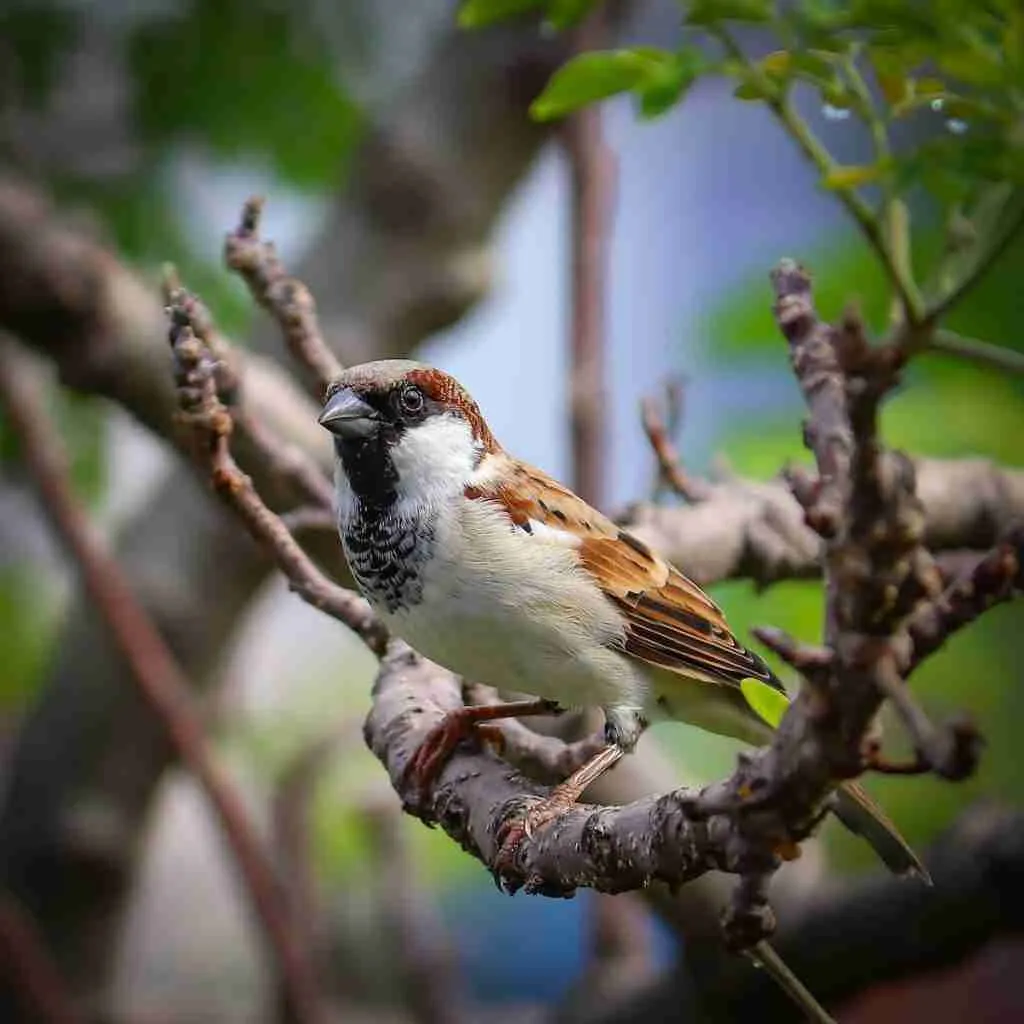
Song Sparrows are ubiquitous across North America, often frequenting forests, meadows and even city parks. These small birds can easily be recognized by their brown plumage strewn with white stripes along the belly region. Song sparrows usually dine on insects and seeds as a primary source of nutrition.
During spring and summer months, males will sing melodic songs to try to woo a potential mate–though they remain in one location throughout the year without migration patterns like other species may have.

Spotted Towhee

The magnificent Spotted Towhee is a large passerine bird with an unmistakable black head, back, wings and tail. Its belly is white in hue and speckled with ebony spots along its sides. Possessing a long bill as well as red eyes that stand out against the darkness of its plumage; this stunning creature has both males and females appearing exactly alike!
Measuring around 11 inches in length – it feeds on insects, fruit and seeds found within wooded regions of western North America where it builds nests amongst trees or shrubs high above ground level – all whilst being active during light hours. What’s more? It hops instead of walking when looking for food which can often take them to suburban yards too!
The Spotted Towhee is a mesmerizing bird with its ebony head, back, wings and tail. Its underparts are white with slight black spots adorning the sides for added majestic takes on it’s appearance. With long bills, bright red eyes and sable legs and feet to complete the look – both male and female appear similar in plumage!

Ruby-crowned Kinglet
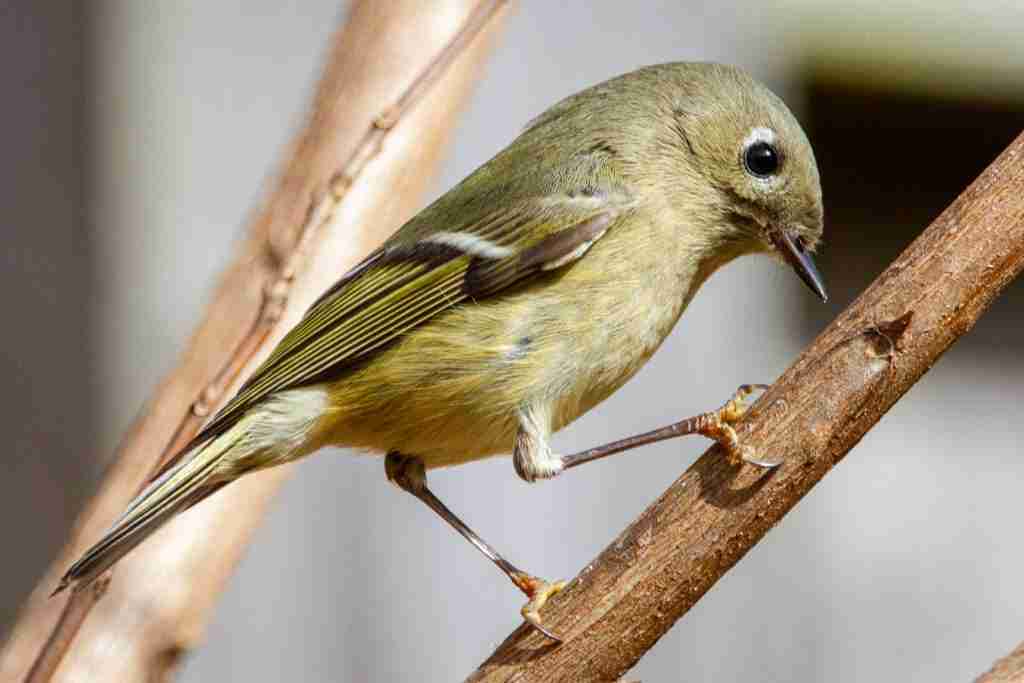
The Ruby-crowned Kinglet is a petite avian species with an emerald upper body and grayish brown underside. Its eye region contains a stripe of white, whereas its crown radiates ruby red when it sings or becomes elated. This songbird survives on an insectivorous diet, which it finds while flitting about in evergreen woods where they create their nests. Characterized by perpetual motion during the search for sustenance, these birds captivate all who witness them!
The Ruby-crowned Kinglet is a common bird in North America that may appear plain, yet its lively nature makes it captivating to observe. Its small size allows it to easily navigate through the trees while searching for food – an enthralling sight you don’t want to miss!

House Finch
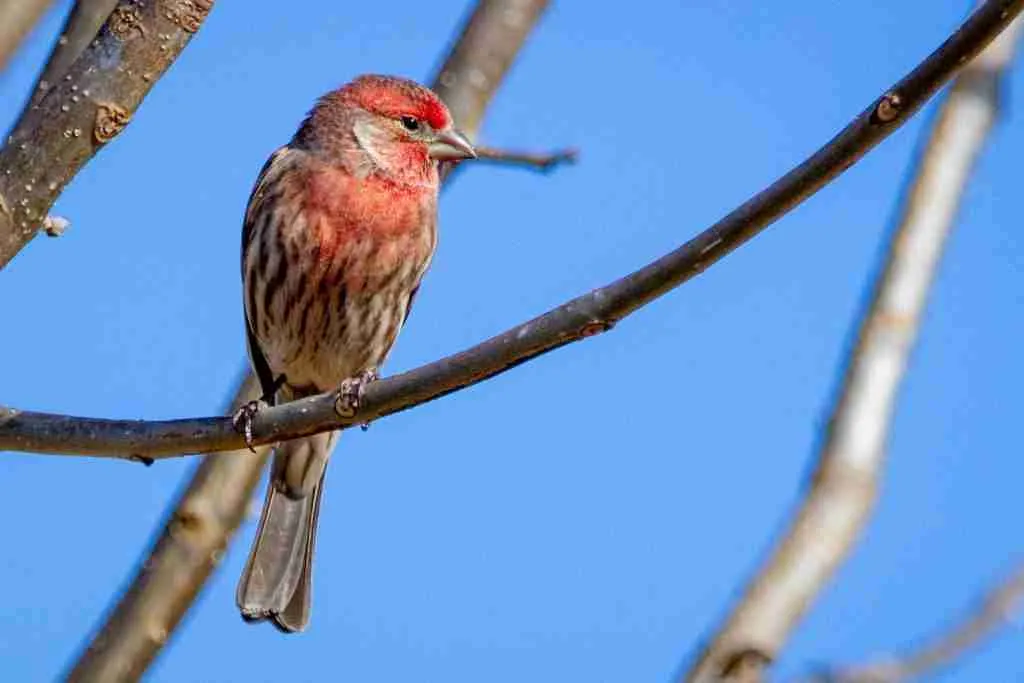
Strikingly beautiful and petite, the house finch typically measures between five to seven inches. Males possess striking red feathers while females sport brown or gray plumes – making a captivating sight when seen in flocks!
They are often found lurking amongst the shrubs and trees of many habitats, as they primarily feed on seeds, fruits, and insects. So if you’re lucky enough to catch them out in nature’s wilds – keep your eyes peeled for pairs of these vibrant little birds!
House finches are widely common in North America, especially across the western U.S., and boast a reputation for their delightful chirping and affinity for nesting close to people.

European Starlings
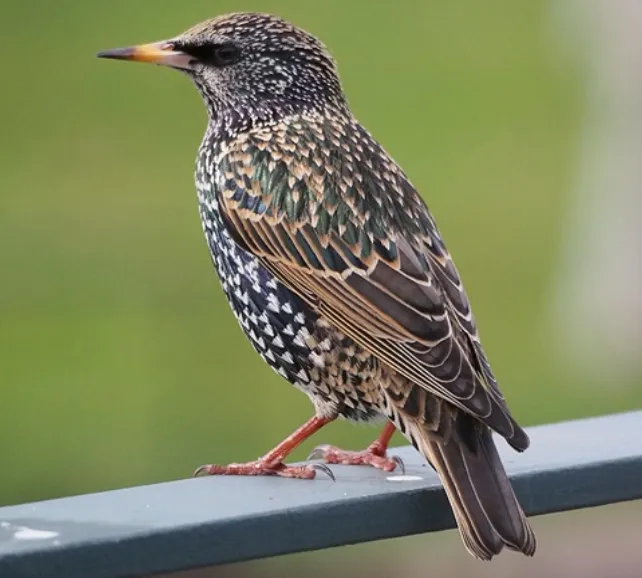
European Starlings are remarkable birds with their jet-black plumage and glimmering yellow eyes. They have made a home for themselves in lands across three continents, from Europe to Asia to North America, where they can be spotted living in woodlands, farmsteads and cities alike.
Their diet is quite diverse as it consists of insects, fruits and seeds alike; however these creatures also possess an aggressive side given that they often attack other animals or compete with each other over territory. In Nevada particularly European Starlings establish residence among open woodlands and farms – measuring about six up until eight inches long at full size!
European Starlings are fierce predators who feed on a variety of insects, fruits, and seeds. These birds can be exceptionally territorial which often leads to them attacking other animals or birds that come too close.

Brown-headed Cowbird
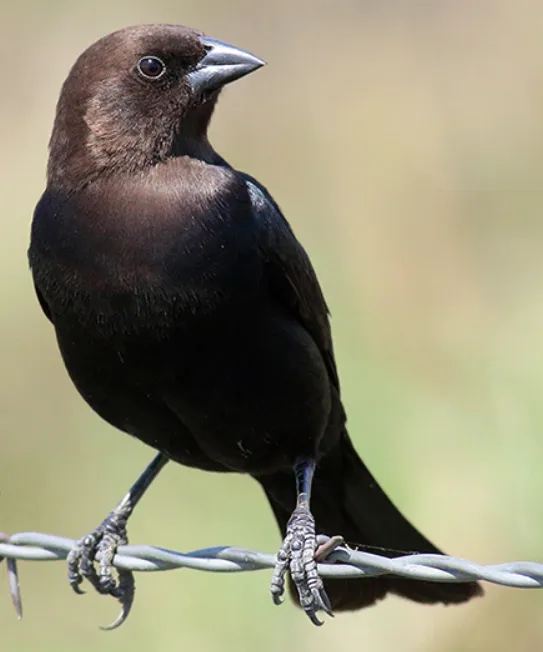
With heads of brown and bodies of black, male Brown-headed Cowbirds stand out among the grayish females found in open areas throughout North and Central America. Being approximately equal to a Robin’s size, these birds feed on insects as well as other small invertebrates. Interestingly enough, they often follow larger animals such as cattle or bison to take advantage of the bugs stirred up by their movement!
Brown-headed Cowbirds are a species of black bird with distinctive brown heads and, sometimes, brighter plumage on the males. These birds can be found throughout North America and Central America in open areas such as fields or meadows.
When it comes to nesting, Brown-headed Cowbirds will lay their eggs in the nests of other bird species rather than building one themselves – an act that has seen them branded pests by some due to this behavior causing those hosts to rear cowbird chicks instead of their own young. In defense against this practice, some breeds have learned how to recognize cowbird eggs and discard them from their nests accordingly.
Brown-headed Cowbirds are approximately the same size as a Robin, and mainly consume insects. To find their food source, these birds follow larger creatures like bison or cattle.

Red-winged Blackbird
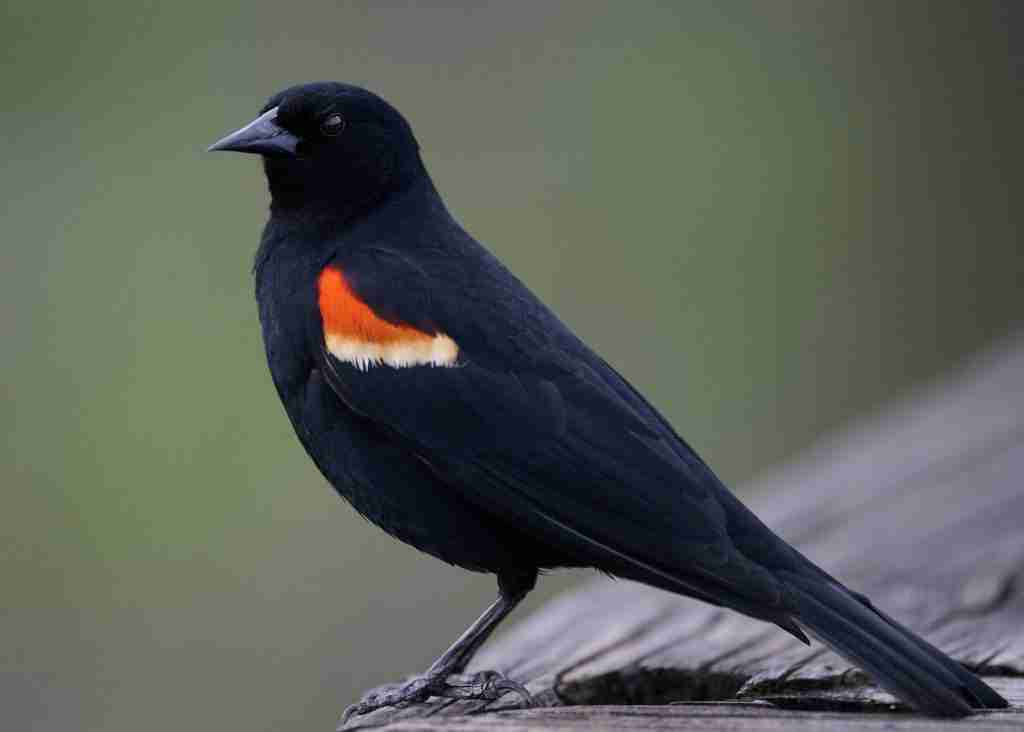
(Agelaius phoeniceus)
With distinctive black feathers, iconic red wing bars and a distinguishing eye ring – the male with yellow and female with brown – the regally-named Red-winged Blackbird is one of nature’s beauty. This mid-sized bird can be found in open habitats such as marshes, meadows, or fields; where it uses its strong territoriality to fend off other birds from its domain. In addition to being an awe inspiring sight, this creature subsists on small invertebrates like insects and spiders for sustenance.
The stunning red-winged blackbird (Agelaius phoeniceus) is a medium-sized avian with its signature black feathers and two vibrant scarlet wing bars. Males of the species possess an enchanting yellow eye ring, while females showcase a captivating brown one. It consumes insects, spiders, and other tiny crawlers for nourishment as it typically resides in open areas such as marshes, meadows, or fields. A territorial creature by nature – this bird will zealously guard its territory from others who may dare to trespass!

Yellow-rumped Warbler
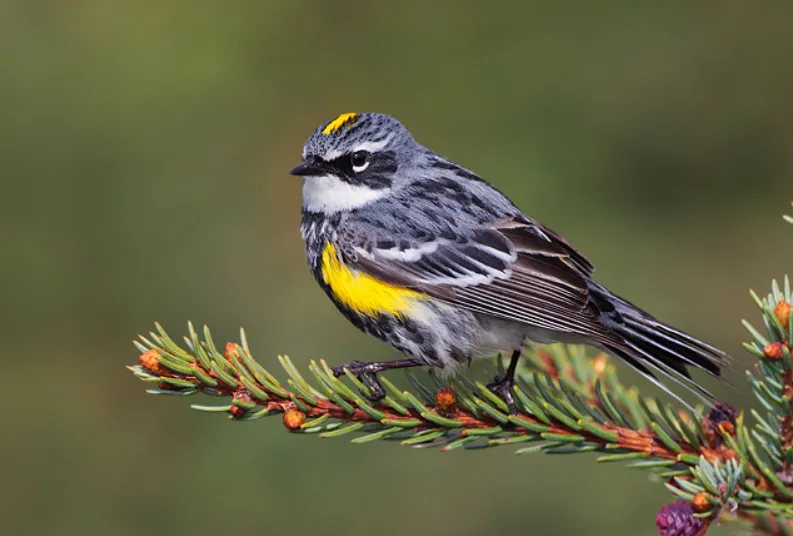
The Yellow-rumped Warbler (Setophaga coronata) is a petite songbird that has distinctive plumage. The male’s colors are striking with its black throat and upper breast, white lower breast and belly, as well as his grayish-brown wings and back. Oppositely, the female of this species has noticeably less vibrant hues than her mate. This warbler nests across North America in open woodlands but will journey to southern Canada throughout Central America for their winter home; it is an uncommon sight outside Europe during migration season.
No bigger than 13 cm (five inches) long and weighing in at a mere 14 to 19 grams (0.49 to 0.67 ounces), the Yellow-rumped Warbler is a small yet mighty avian! Primarily consuming insects, such as caterpillars, this warbler will feast on berries and fruits when needed during wintertime.
The Yellow-rumped Warbler forages high above the ground in trees, but it also has an impressive ability–it can hover midair while snatching its insect prey! With a wingspan that stretches 20 cm (eight inches), this bird makes traveling effortless while providing us with endless entertainment at any given moment.

American Crow
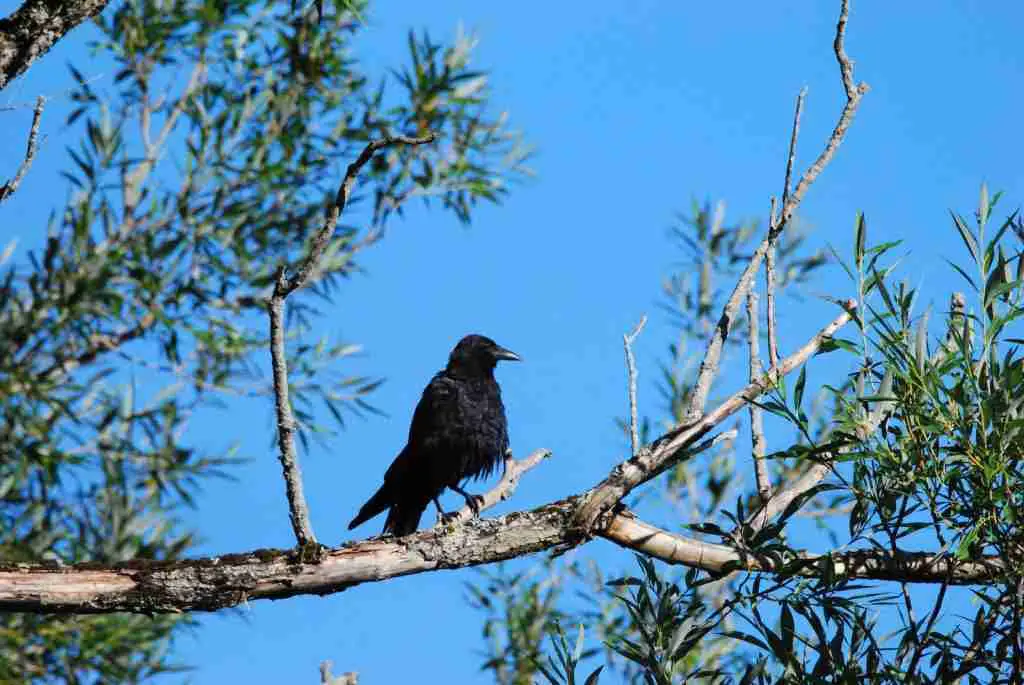
In a collaborative effort to safeguard Nevada’s birds, the Nevada Bird Atlas project has been launched. This endeavor seeks community members from across the state of Nevada to submit photos and information about the feathered creatures that they witness in their respective areas.
The data obtained will be used for creating an interactive map pinpointing where various bird species are located within Nevada, which can help conservationists more accurately protect both these animals and their habitats.
Spearheaded by the joint collaboration between three key organizations — nameyly, the University of Nevada, Reno; Audubon Society; as well as funded by U.S Fish and Wildlife Service — this campaign is sure to make a positive impact on our avian population!

American Goldfinch

Majestic American Goldfinches are easily recognizable with their striking yellow bodies and black wings. The male of the species has an added element in its appearance; a black cap on its head that is absent from the female’s form.
These beautiful birds thrive in open woodlands and gardens across North America, where they consume mainly seeds but also take advantage of some insects for sustenance. During wintertime, these delightful creatures congregate into flocks to feed on thistle seeds exclusively instead of other offerings provided by nature.
The American Goldfinch, found in Nevada and measuring roughly 12 cm long with a wingspan of 20 cm, is surprisingly tame around humans. That said, their docile demeanor can change when confronted by other birds invading their territory; they are then known to become quite aggressive.
In the wild these birds live for approximately 11 years making them one of nature’s longest living species!

What is the most common bird in Nevada?
In the state of Nevada, one can encounter the majestic Mountain Bluebird on a regular basis. This small songbird flaunts its striking blue-gray plumage with white bellies and black bills as it soars through western North America’s mountains and foothills in search of insect prey or berry snacks.
What kind of birds do we have in Las Vegas?
Las Vegas is home to a variety of feathered friends, including classic urbanites such as pigeons, sparrows and crows. Ducks can also be spotted here in abundance – the mallard being particularly commonplace – but don’t forget its aquatic cousins like the wood duck and blue-winged teal! Of course, there’s more than just these familiar face; you might even spot some local raptors if you look up close enough.
Las Vegas is a paradise for bird watching! From red-tailed hawks to Cooper’s Hawks, and American Kestrels to the house finch, canyon wren, and black-chinned hummingbird–this city has it all. So why not take advantage of this amazing opportunity today? Come experience nature at its finest in Las Vegas!
Las Vegas’ Wetlands Park is an absolute gem for all bird-lovers; it’s home to many species of birds, such as ducks, geese, herons, and egrets. Furthermore, the park also boasts a few ponds that are populated with some of the most dazzling goldfish in town! Whether you’re a beginner or seasoned birder – there’s something here for everyone at this incredible park.
Why are there no birds in Vegas?
With nearly two years under my belt in Vegas, I’m still struggling to answer one question: where are all the birds? Not a single sparrow or raven – it’s absolutely bizarre. That leads me to ponder what on earth happened to them; is there something sinister behind this avian disappearance in Las Vegas?
There are several potential explanations for the absence of birds in Vegas. One school of thought purports that bright lights and deafening sounds can be intimidating to our feathered friends, thus scaring them away from the city. Additionally, some believe that dry desert weather is not suitable habitat for avian species. Lastly, it could simply be an unfortunate side effect caused by sprawling casinos and resorts unknowingly driving out wildlife with their construction projects. I’m still struggling to comprehend the perplexing lack of birds in Las Vegas. Theories may abound, but as yet I don’t know which is closest to reality. All I do know for certain is that this absence remains remarkable and entirely uncanny. Perhaps someday the answer will finally be revealed – until then, why there are no birds in Vegas remains an unsolved mystery.

An avid ornithologist, zoologist and biologist with an unwavering passion for birds and wild animals.
Dr. Wilson’s journey in ornithology began in childhood and led him to obtain a Ph.D. in Ornithology from the prestigious Avian Research Institute. He has worked closely with renowned experts in the field and conducted extensive research and field studies globally.

